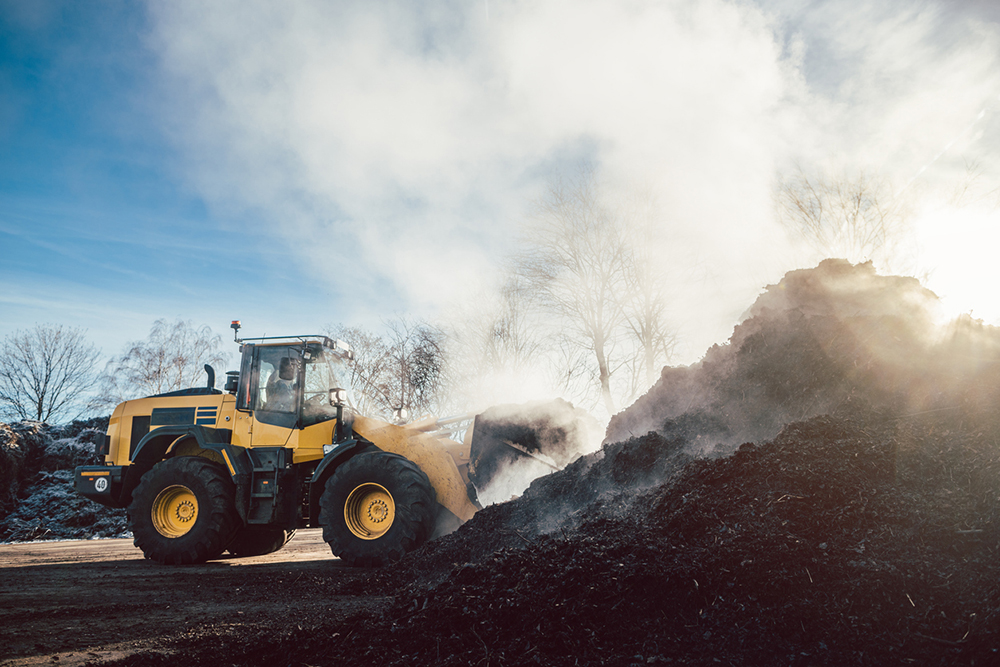Summary
ISO 14855 determines the ultimate aerobic biodegradability under controlled composting conditions at 58ºC by measuring CO2 evolution. This test can last anywhere from 45 days to six months and is similar to ASTM D5338.
There are two parts to this test, the general method (part 1), and the gravimetric measurement of CO2 evolved in a laboratory-scale test (part 2). Part 2, also known as ISO 14855-2, of this test is more widely used.
ISO 14855-2 Testing Method
This testing method uses respirometry to determine the biodegradability by measuring the CO2 formation during the biodegradation process. As the plastic material decomposes, the primary result is the formation of CO2 and H2O, and the measurement of CO2 generated can reflect the biodegradation of the test material. The CO2 generated is compared to the theoretical CO2 amount to easily calculate the degradation percentages over a specific period.
The ISO 14855-2 testing method is designed to yield the optimum rate of biodegradation of plastic materials in mature compost by controlling the humidity, aeration ratio, and temperature in the composting vessel. The degradation rate is periodically measured by determining the mass of evolved CO2 using an absorption column filled with soda lime and soda talc on an electronic balance.
Here are some additional details about the ISO 14855 test method:
- Materials that can be tested:
- Natural and/or synthetic polymers, copolymers or mixtures of these
- Plastic materials that contain additives such as plasticizers or colorants
- Water-soluble polymers
- Materials that do not inhibit the microorganisms present in the inoculum under the test conditions
- Test substance requirement:
- Organic carbon content is required in order to calculate the ThCO2
- Powder form is preferable with a maximum particle size of 250um in diameter
- Measurement: CO2 evolution
- Temperature: 58 °C
- Reference: A well-defined biodegradable polymer (e.g. thin-layer chromatography grade microcrystalline cellulose with a particle size <20um)
- Reactor size: 500mL is preferred
- Test substance dosage: Normally a minimum of 10g total dry solids containing 4g of total organic carbon per 500mL reactor
- Inoculum: Well-aerated compost from a properly operating aerobic composting plant
- Inoculum dosage: 60g of total dry solids
- Ammonia is absorbed by a bottle filled with 1M sulfuric acid before CO2 absorption
- Compost is stirred weekly to prevent extensive channeling and to ensure uniform access for the microorganisms to the test material
- Number of reactors: 3 for blank control, 3 for reference control, and 3 for test substance
- Duration: Normally 45 days, but can be continued for up to 6 months
When You Are Looking for ISO 14855 Testing, Turn to Aropha
At Aropha, strive to provide our customers with streamlined and efficient biodegradability testing. We have the experience and capabilities needed to test plastics, biopolymers, packaging, or other materials or products. With our combination of our digital twin simulation platform and lab biodegradability testing, we can provide accurate results throughout product development. Plus, we can provide you with the proper test documentation so you can obtain eco-labels for your products.
ISO 14855 Requirement and Applicability
Different testing methods are applicable for materials with different properties. Below is a summary of the applicability of ISO 14855. Please check our Method Selection Guide to select the most appropriate method for your materials. You can also find the applicability for many other methods in our Resource Center.| Test | Analytical method | Sample info required * | Poorly soluble | Volatile | Adsorbing |
|---|---|---|---|---|---|
| ISO 14855 | CO2 evolution | Organic carbon content * | + | - | + |
*“Sample info required” is the information needed to calculate the biodegradation percentages. This must be available for a selected method.
*“Organic carbon content” is the ratio of the organic carbon weight to the weight of the sample. It can be calculated by the sample formula (e.g., acetic acid C2H4O2, carbon content is 12*2/(12*2+1*4+16*2)=40%). Try our Online C% Calculator. If the formula is unknown, we can send the sample out to a third party lab for you for analysis (normally $110 with a 10-day turnaround time).
Pricing
$2399/sample for High-Throughput Screening$4401/sample for Biodegradability Certification

